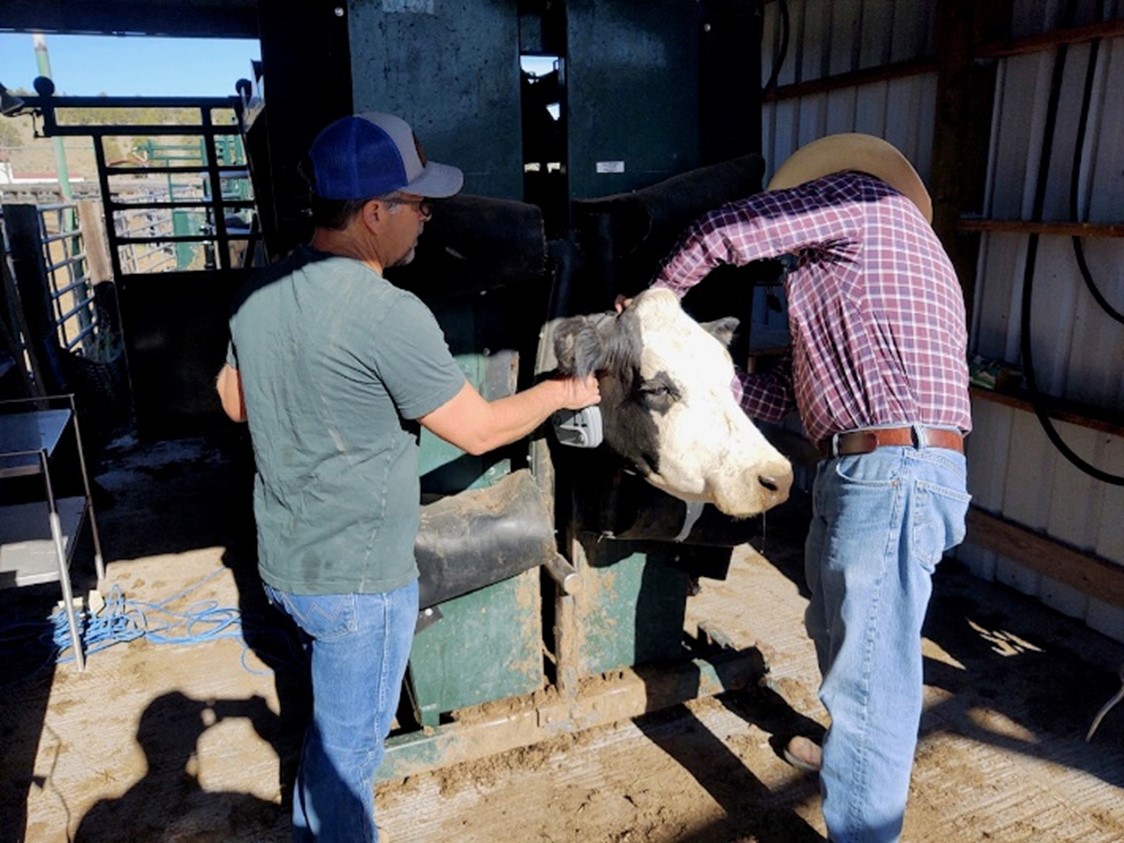
What is virtual fencing?
Virtual fencing, a relatively new technology, allows ranchers to control livestock distribution in rangeland landscapes without physical fences. Livestock wear collars that communicate with GPS and reception towers to form a virtual fence set by the rancher or land manager. When the livestock reach the limit of the virtual fence, auditory stimuli (often a series of loud beeps) emit from the collar. If livestock pass the fence limit, they receive a benign shock. Cattle have demonstrated the ability and tendency to rapidly learn the virtual fencing cues, eventually responding to the audio cue alone. Several studies have documented success with sheep and goats as well.
A climate adaptation strategy
Soil erosion is one of the major challenges facing agriculture in a changing climate. Soil erosion and water quality are expected to worsen with increased drought and extreme precipitation events associated with climate change. Overgrazing is one of the leading causes of soil erosion and degradation on rangelands. Overgrazing occurs when plants are exposed to intensive livestock grazing for an extended time, or without recovery periods. As the weakened, destabilized roots of overgrazed grassland plants decompose, soil loosens, and soil quality lessens. Extreme precipitation events carry eroded soil to waterways, impacting water quality and releasing previously stored carbon into the atmosphere.
Virtual fencing could prove to be an effective climate adaptation strategy, as it can be used to contain animals within a desired area, exclude them from undesired areas, or move them across the landscape. Virtual fencing has the potential to diminish soil erosion associated with overgrazing and to improve soil and water quality through managed grazing. Managed grazing is careful management of livestock density and the timing and intensity of grazing. It can stimulate plant regrowth and add manure to the soil. While ranchers with traditional fences can also practice managed grazing, it requires much more planning and labor, and animal movements are limited to pastures defined by permanent fence boundaries. Virtual fencing allows managers to frequently and efficiently move livestock from one pasture to the next and to define new within-pasture boundaries.
Advantages:
- Allows ranchers to change the locations of livestock grazing, both between and within years
- Allows ranchers to move livestock with reduced labor inputs
- In some cases, can be less expensive than traditional fencing
- Can be used in areas that are difficult to fence
- Eliminates wildlife conflicts with traditional wire fencing
- Can exclude cattle from areas of management concern, including burned sagebrush steppe
- Prevents overgrazing and aids in soil carbon sequestration
- Can limit undesired effects of grazing in riparian areas
Disadvantages:
- Involves collar installation
- Relies on functional technology
- Has a high upfront cost of implementation
Virtual fencing has proven effective in excluding cattle from riparian areas, areas of management concern, recently burned areas, and areas with regenerating saplings. Virtual fencing has also been found effective in encouraging cattle to graze on undesired/invasive species. Additional research is needed to evaluate virtual fencing technology in larger rangeland settings, particularly to understand if ease of use changes with scale, since animals interact with larger perimeters less often.

